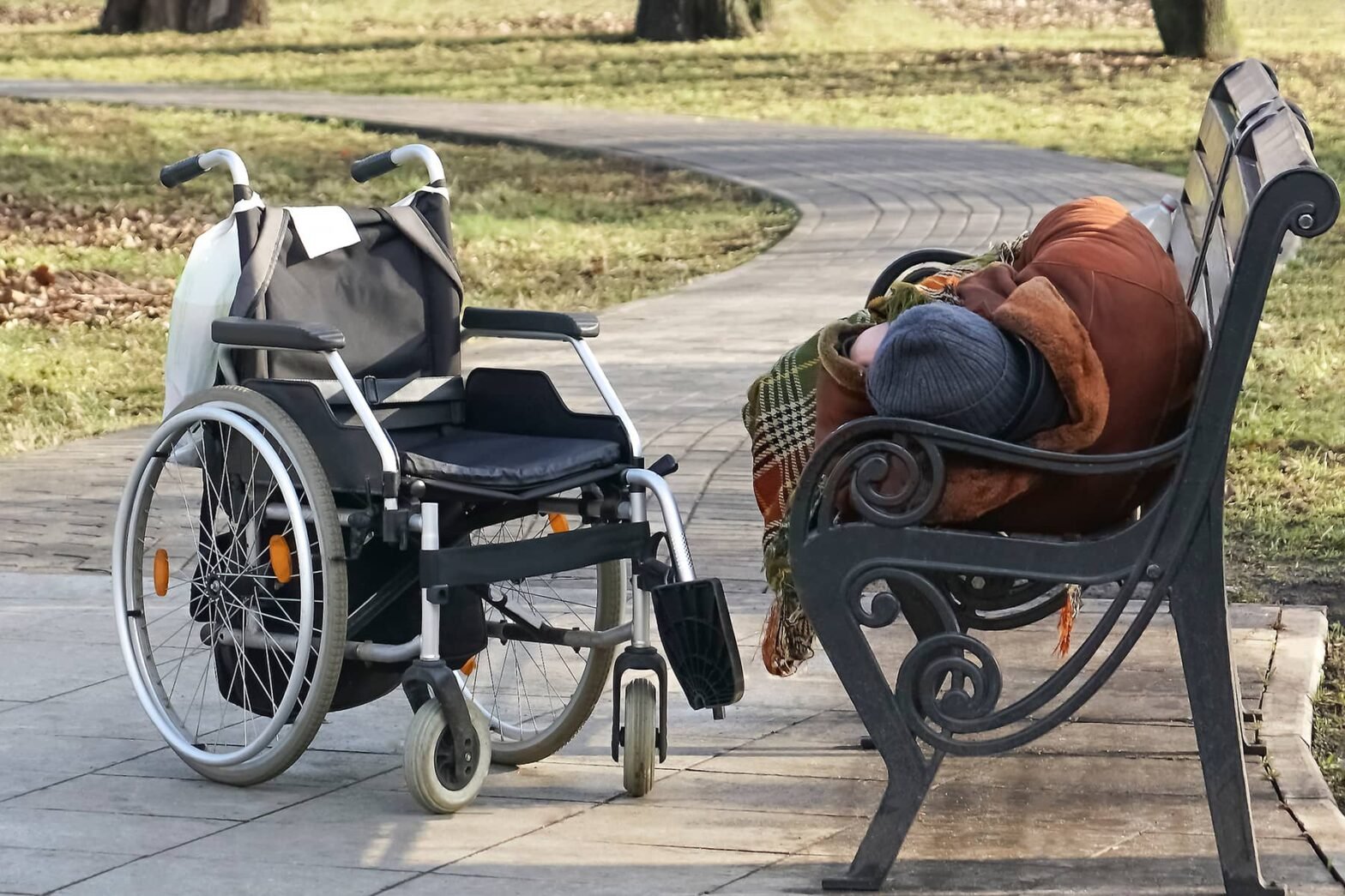Homelessness is reaching record highs in the UK. The latest statistics on statutory homelessness show that in March 2023, 104,510 households – including over 131,000 children – were living in hotels, hostels, B&Bs and the like. But disabled people are particularly affected by homelessness, as our new report, commissioned by the Centre for Homelessness Impact, explores.
While disabled people represent 22% of the overall population, a recent survey suggests they may represent up to 39% of the homeless population.
According to government data, the number of people qualifying for homelessness support – such as emergency accommodation – in England because of a disability rose by 73% from 2018-22. In Wales, the numbers more than doubled from 2015-19. But these figures do not capture people whose disability is not recognised or disclosed, people experiencing “hidden homelessness”, such as sofa surfing, or those who were not found eligible for support.
As well as physical disabilities, neurodevelopmental conditions, such as learning disabilities and autism, are worryingly overrepresented. Learning disabilities occur at 2% in the general population but 13% in homeless populations. Autism is estimated to occur in the general population at 1-2%, but at 12-18% in homeless populations.
For disabled people, homelessness can lead to deterioration of existing conditions, or onset of new ones. Unfortunately, lack of awareness among local councils and homelessness support charities makes it difficult for people to exit homelessness.
Local councils must provide advice and alternative housing options to people who are homeless or facing homelessness, and have a duty to house people if they meet certain eligibility criteria. For disabled people in England and Wales, this involves proving you are more vulnerable than “most other people” because of a disability or health condition. Research shows this clause is subjective and can be inconsistently applied by housing officers.
In our report and in previous research by Beth Stone, we spoke to disabled and autistic people about their experiences of homeless. Their experiences reveal some of the barriers people face in getting support.
One caseworker at a charity in Leicester told us that not having an official neurodevelopmental diagnosis, such as autism or ADHD, can prevent access to housing or other support. But getting a diagnosis while homeless is exceptionally hard. It is difficult to access health services without a permanent address. And other factors associated with homelessness, such as mental health, can affect how people’s symptoms appear and complicate diagnoses.
When a local council does provide housing, it often does not have the accommodations people may need, such as being wheelchair accessible. Charlston, an autistic man with multiple sclerosis, explained the impact of inadequate housing on his health and wellbeing:
It took 10 months, of the council saying they could do nothing before I got offered a hostel room & another year before I got permanent accommodation. When I did get a tenancy agreement it was not disabled modified, no accessible shower as of yet, I’m still waiting. My health has deteriorated because of the disruptions to my housing. I’m grateful for a place that’s mine, just waiting for the moment I can truly call it home.
Due to resourcing issues in councils and support services, people are left with little choice but to accept unsuitable accommodation. In England, refusing accommodation – even on accessibility grounds – can lead to the council labelling a person “intentionally homeless”. They are then denied further support. As Megan, an autistic woman, put it:
When you have a disability, getting appropriate housing support feels nearly impossible. I don’t feel like my needs were ever taken seriously. I was told the only option was shared accommodation. Being autistic, living with multiple different people is not an option for me. They didn’t listen and I was told if I actually needed the support I would take whatever I could get.
Support from homelessness organisations and charities is essential to help people navigate complex services. But our findings show that many of these services lack the expertise and communication necessary to engage with disabled people. As a result, many are left to navigate with little help, which can significantly prolong homelessness.
Disabled people are often in precarious and inaccessible housing scenarios, which lead many to become homeless. They are more likely to be in social housing, and less likely to own their own homes. And despite a recent government commitment to fully accessible housing, there is a chronic shortage of homes with features such as ramps, lifts or lowered surfaces.
In England only 7% of homes incorporate the bare minimum of accessibility features. In Scotland only 0.7% of local authority housing and 1.5% of properties managed by registered social landlords are wheelchair accessible.
Disabled people are also more likely than non-disabled people to live in poverty, and are less likely to be in full-time employment. On top of this, they face significantly high additional monthly costs – £500 to £1000 to pay for specialist equipment or higher energy costs, for example – which are undercompensated by disability benefits.
Disability benefit spending has been reduced by nearly £5 billion over the past decade. And additional reductions to housing benefit can price disabled people out of the renting market.
According to the people we spoke to for our report, there is a postcode lottery when disabled people approach their local councils for support. In England and Wales, there is a lack of clarity on what support people are entitled to from the government, and how they can prove their disability meets the vulnerability clause.
Policies at local, regional and national levels aim to prevent and relieve homelessness. For example, the Homelessness Reduction Act (2017) places a duty on local authorities to try to prevent homelessness at earlier stages. But our analysis shows that these initiatives are not working to protect disabled people. In reality, their risk of entering and remaining homeless is worsening.





















